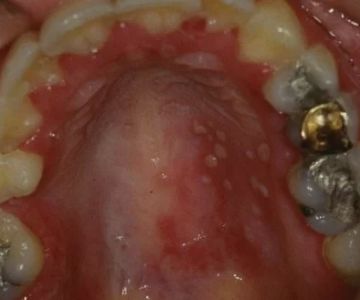
Understanding the Risk of Contracting STDs Through Oral Sex
Many people mistakenly believe that oral sex is a completely safe alternative to vaginal or anal intercourse. While the risk of pregnancy is non-existent in oral sex, the risk of contracting sexually transmitted diseases (STDs) is very real. In the United States, the Centers for Disease Control and Prevention (CDC) reports millions of new STD cases each year, and a significant number of those can be linked to oral sexual contact. Understanding how these infections are transmitted and how to reduce your risk is crucial for maintaining both sexual and overall health.
How STDs Can Be Transmitted During Oral Sex
1. Direct Contact with Infected Areas
Many STDs, including herpes simplex virus (HSV), human papillomavirus (HPV), syphilis, and gonorrhea, can be passed through direct contact with sores, lesions, or mucous membranes. If your mouth, lips, or throat come into contact with infected genital areas, the bacteria or virus can be transmitted even if there are no visible symptoms.
2. Exchange of Bodily Fluids
Infections like gonorrhea, chlamydia, and HIV can be present in semen, vaginal fluids, and other genital secretions. During oral sex, these fluids can enter the mouth and throat, creating a pathway for infection. Even microscopic cuts in the mouth, caused by brushing or flossing, can increase susceptibility.
Common STDs Transmitted Through Oral Sex
1. Gonorrhea and Chlamydia
Gonorrhea can infect the throat, a condition called pharyngeal gonorrhea. While chlamydia is less commonly found in the throat, it can still be transmitted via oral contact. These infections often cause mild symptoms or none at all, making regular testing essential.
2. Herpes Simplex Virus (HSV-1 and HSV-2)
HSV-1, typically associated with cold sores, and HSV-2, usually linked to genital herpes, can be transmitted in either direction between the mouth and genitals. Even when sores are not visible, viral shedding can still occur.
3. Human Papillomavirus (HPV)
HPV is one of the most common sexually transmitted infections in the U.S. Certain high-risk strains can cause cancers of the throat, tonsils, and tongue. Oral HPV infections often go unnoticed until they cause serious health issues years later.
Real-Life Example: Why Awareness Matters
Consider the case of a 29-year-old man who developed persistent throat discomfort. Initial tests suggested a bacterial infection, but further examination revealed pharyngeal gonorrhea contracted through oral sex. He had no genital symptoms, which delayed the diagnosis. Early testing and awareness could have prevented complications and spread to others.
How to Reduce the Risk of Contracting STDs from Oral Sex
1. Use Protection
Using condoms or dental dams during oral sex greatly reduces the risk of transmission. While not 100% effective, they provide a strong barrier against bacteria and viruses. Flavored condoms and flavored dams can make protection more comfortable for both partners.
2. Avoid Sexual Activity During Outbreaks or Symptoms
If you or your partner notice sores, bumps, or unusual discharge, it’s best to avoid sexual contact until cleared by a healthcare provider. STDs can be most contagious when symptoms are present.
3. Maintain Regular STD Testing
Because many oral STDs cause no symptoms, regular testing is essential for sexually active individuals. This includes throat swabs for oral infections, which are not always part of standard STD screenings unless specifically requested.
The Bigger Picture: Protecting Your Overall Health
Oral health plays a role in STD transmission, too. Open sores, gum disease, or inflammation in the mouth can make it easier for viruses and bacteria to enter the bloodstream. Maintaining good oral hygiene and seeking care for any dental issues not only protects your smile but can also help reduce your STD risk. For guidance on oral health as part of your sexual well-being, Family Dentistry Online offers resources and recommendations to keep you safe and informed.







 Dr. Eric Chu4.0 (18 review)
Dr. Eric Chu4.0 (18 review) Family and Cosmetic Dentistry of Randolph, Dr. Anthony Fusco & Dr. Joseph Caravano5.0 (280 review)
Family and Cosmetic Dentistry of Randolph, Dr. Anthony Fusco & Dr. Joseph Caravano5.0 (280 review) Tranquil Dental4.0 (372 review)
Tranquil Dental4.0 (372 review) Great Expressions Dental Centers - Cascade4.0 (1835 review)
Great Expressions Dental Centers - Cascade4.0 (1835 review) Fontana Smiles3.0 (7 review)
Fontana Smiles3.0 (7 review) Jean-Paul Boudreau DMD, LLC4.0 (89 review)
Jean-Paul Boudreau DMD, LLC4.0 (89 review) The Importance of Oral Health Education During Pregnancy for a Healthy Pregnancy
The Importance of Oral Health Education During Pregnancy for a Healthy Pregnancy Why Skipping Dental Checkups Can Lead to Bigger Oral Health Problems
Why Skipping Dental Checkups Can Lead to Bigger Oral Health Problems Best Tips for Brushing Your Teeth Properly for Healthy Gums: Essential Techniques for Oral Health
Best Tips for Brushing Your Teeth Properly for Healthy Gums: Essential Techniques for Oral Health Advantages of Porcelain Dental Restorations
Advantages of Porcelain Dental Restorations How Can Diabetes Cause Tooth and Gum Problems? Preventing and Managing Oral Health Issues
How Can Diabetes Cause Tooth and Gum Problems? Preventing and Managing Oral Health Issues Healthy Habits for Promoting Good Oral Health and Hygiene: Tips for a Healthy Smile
Healthy Habits for Promoting Good Oral Health and Hygiene: Tips for a Healthy Smile